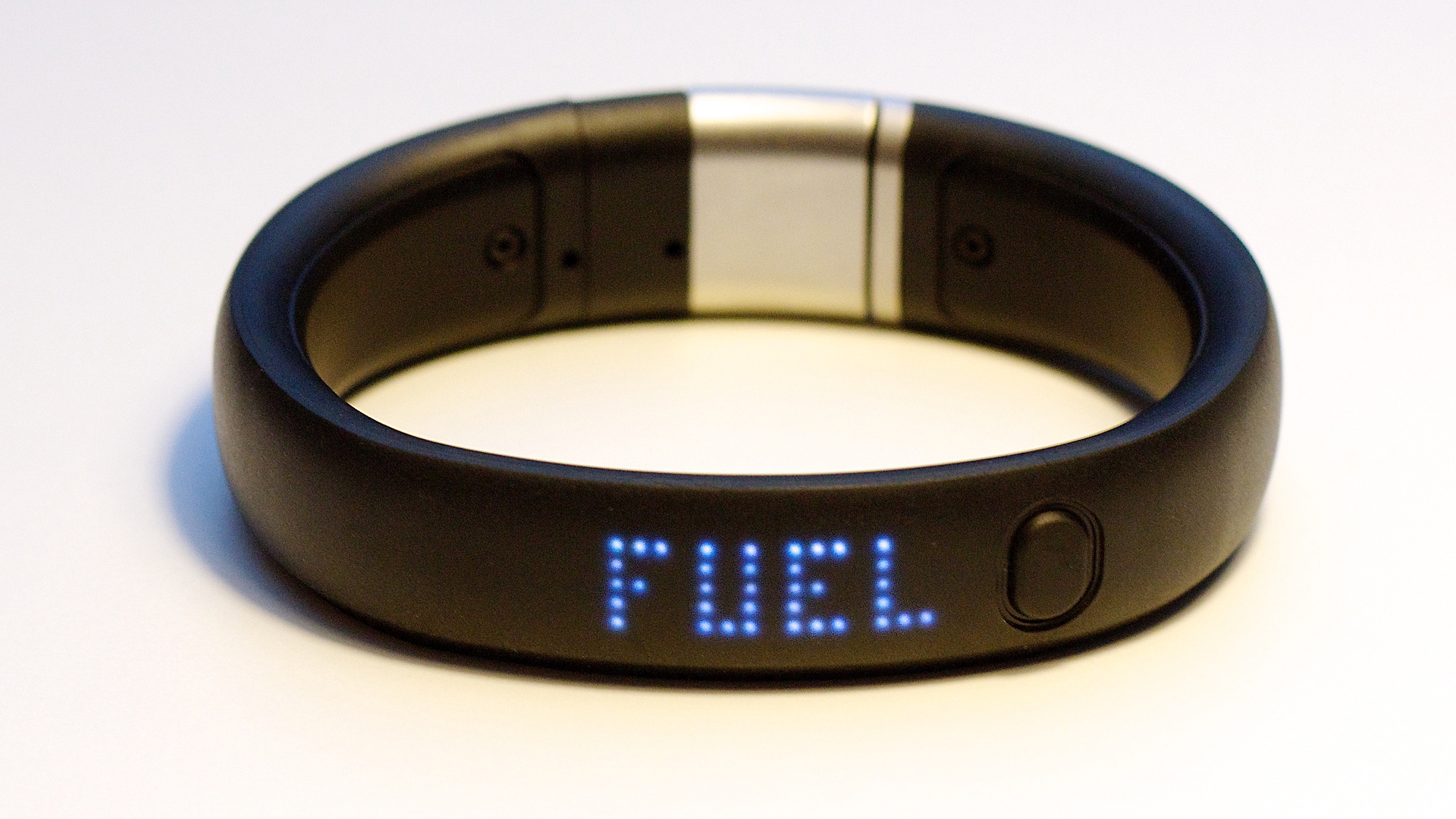About two months ago I purchased and started using the Nike Fuel Band. I didn’t have a particular exercise reason, more than anything I wanted to see what the experience was like and was interested in how companies were using a physical device connected to a mobile device. Now, 75 days later having faithfully worn the Fuel Band every day, I have a few thoughts on the experience.
Nike Fuel Band basically measures steps and movement, and provides a burned calorie count and a proprietary number called “Fuel Points” which are determined using a strange series of computations that Nike doesn’t disclose. The band heavily relies on the “Fuel Points” model as the primary metric you’re supposed to care about. The step count and calorie count takes a backseat in reporting and focus.
On the plus side, there is added momentum to get out and exercise, or at least grow your numbers, due to a “trophy” like system that encourages and rewards you. For about 50 days this system does a good job of urging you to use the stairs rather than the elevator and be more thoughtful about your exercise. But over time this system slowly flips to an expectation that you’re self-motivated without the need for prompts and rewards. This is good in concept, but the problem is that the band itself isn’t very comfortable. So you have this nagging thing on your arm all the time and it slowly evolves from being a good tracker to being an irritant.
The measurement and reporting system is interesting, but over time becomes less valuable unless you have dramatically different habits on different days. Generally you see the same curves, and there isn’t a clear way to see step count or calorie burning in an easy-to-use chart, which is much more useful than the Fuel points you’re stuck with. While FitBit and Jambox’s similar products do not have the same trophy motivating system, they do offer metrics that make more sense to track over time, and they have the added capability of measuring sleep and acting as a smarter alarm clock, something Fuel Band doesn’t do.
The tracking is somewhat helpful, but the hardware seems to be turned poorly. The step count doesn’t work consistently (or perhaps I just walk strange) and driving on a bumpy road is often equivalent to running on a treadmill, which doesn’t seem right. Battery life tends to be about two-three weeks unless you’re syncing constantly, which is quite nice and far better than several of its competitors.
The mobile app is extremely simple and does the job. The Bluetooth connectivity works well, although it’s a drain on your iPhone’s battery if it’s left on (it can’t be run for the complete day). The PC/Mac app is far less valuable to the point of being pointless. The website is a mix between the two; there’s not a heavy reason to go to it if you have the mobile app. You can set things up there, but there’s no point to using it.
The good news is that the band changes habits, and generally speaking does a good job of mentally shifting your behavior to be more active. The bad news is that as a device it rapidly becomes less interesting to continue using after 2 months or so, and there is little happening in the way of innovating and adding value to the device. In the end, its competitors offer far more at a cheaper price… a shame given the technology in the Nike Fuel Band offers a lot more potential. There are rumors that the updated Fuel Band will offer more capabilities and Nike will open the API to allow developers to create their own products using the data, much like Philips Hue does. Unfortunately, there’s little reason to do much with the data without significant motivation to developers.
Recommendation: other products are better, but if you’re looking for motivators to change your behavior, it’s worth a try. I wanted to like it more, and it certainly did provide a nice experience for the first 30 days or so… but it feels like a lot of potential is left on the table.
